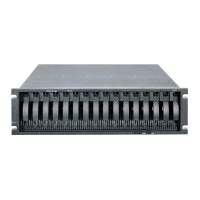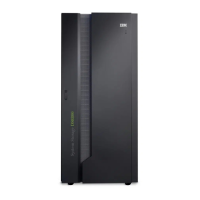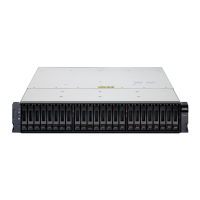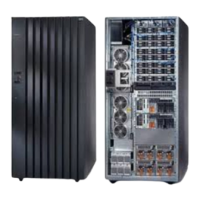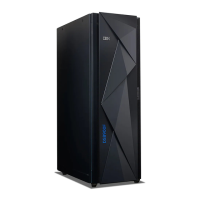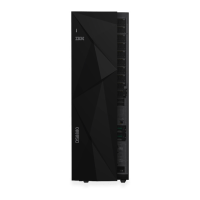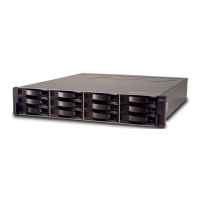v One Gbps iSCSI host interface card can operate at 1 Gbps or 100 Mbps
Ethernet speeds. However, the 1 Gbps speed should be the operating
speed for the iSCSI ports in the production environment.
The controllers interact with the fibre channel host bus adapter ports in the
host server or the fibre channel switch to determine the fastest compatible
speed between the controllers and the host or switch. The fastest
compatible speed becomes the operating speed of the link. If the host or
switch on the other end of the link are either fixed-speed or not capable of
negotiating, the controllers automatically detect the operating speed of the
other host or switch and set the controller link speed accordingly. Link
speed negotiation for a given host channel is limited to link speeds
supported by the small form-factor pluggable (SFP) module on that channel.
The controllers interact with the iSCSI host bus adapter ports in the host
server or the Ethernet switch to determine the fastest compatible speed
between the controllers and the host or switch. The fastest compatible
speed becomes the operating speed of the link. If the host or switch on the
other end of the link are either fixed-speed or not capable of negotiating,
the controllers automatically detect the operating speed of the other host or
switch and set the controller link speed accordingly. Table 5 on page 15
shows the default IP addresses of the iSCSI host ports.
The iSCSI ports support Internet Storage Naming Service (iSNS) in
Microsoft Windows environment and Challenge Handshake Authentication
Protocol (CHAP).
The controllers enter into auto-negotiation at these points in time:
v Start-of-day
v Detection of a link-up event after a previous link-down event
If the auto-negotiation process fails, the controllers consider the link to be
down until negotiation is again attempted at one of these points in time.
Ethernet ports
The Ethernet connections provide for out-of-band management
configurations to a host. The Ethernet ports are used for an RJ-45
10BASE-T or 100BASE-T Ethernet connection to each controller. Use the
Ethernet connection to directly manage the DS5100 and DS5300.
Use one Ethernet port for daily management of the DS5100 and DS5300.
Reserve the other port for use by service personnel or for subsystem
monitoring hardware that may be available in the future.
The two Ethernet ports must be connected into networks with two separate
subnet masks. Otherwise, the following Recovery Guru error will be
generated:
Ethernet Configuration conflict. Both Ethernet ports for a given
DS5100 and DS5300 controller have been assigned IP addresses
from the same subnet.
You can also make out-of-band management connections to the DS5100
and DS5300 controllers using the default IP addresses. See Table 5 on
page 15 for the default IP addresses and subnet masks for the
management ports and iSCSI ports (if installed). See “Setting up IP
addresses for DS5100 and DS5300 storage controllers” on page 15 for
more information.
14 IBM System Storage DS5100 and DS5300 Storage Subsystem: Installation, User’s, and Maintenance Guide

